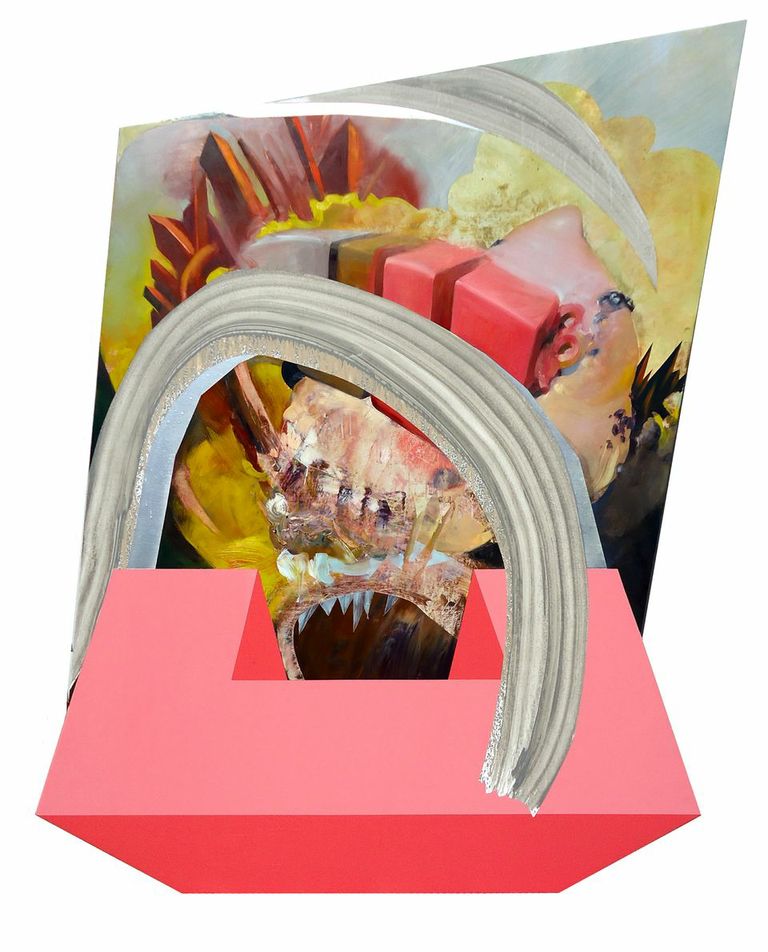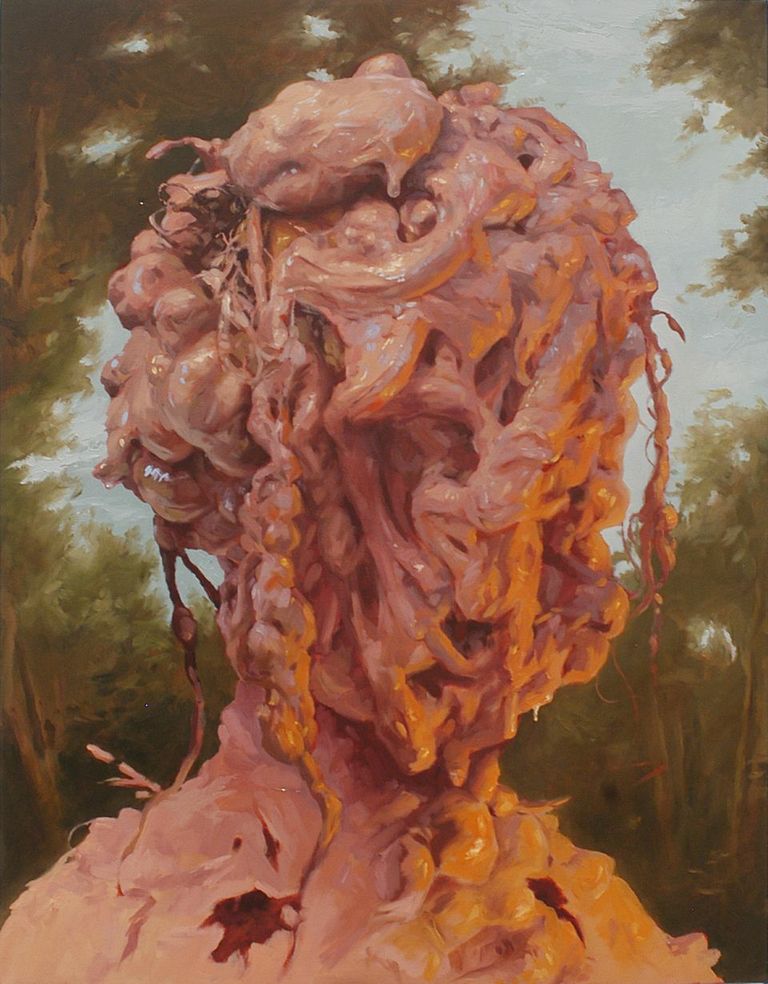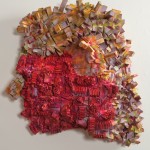Manifest’s Tenth Anniversary
By Kevin T. Kelly
The November 8th opening at Manifest marked the gallery’s tenth anniversary as well as the grand opening of their much anticipated expansion, effectively doubling their exhibition space. For the past decade, Manifest has been challenging the continually shifting contemporary “brick and mortar” art gallery paradigm by defining and playing by its own rules… and winning. Their success is due largely to the visionary dedication of Manifest’s founder, executive director and chief curator, Jason Franz whose uncompromising commitment to excellence has earned the gallery an undeniable rank of distinction and respect among both artists and institutions alike.
Heralding the expansion and installed in three of Manifest’s five galleries is the invitational “Fresh Paint”, an exhibition of 32 artists’ work from around the country and as far away as Germany and China. In a wonderfully diverse and comprehensive selection of work, the show encompasses a wide array of media, styles and content attesting to the fluid definition of what painting is. “Fresh Paint” runs every gamut from hard edged photorealism to loose and gestural expressionism, from the visceral to the ethereal and from the subtle to the sublime, but one common thread throughout is the artist’s love of paint. Another is a prevailing (and palpable) quality of sentience that transcends mere facility and craftsmanship. Upon first glance, much of the imagery might be construed as “academic” (ie: portraiture, still life, landscape), but a closer read reveals a spiritual and deeply humanistic sensitivity to what many would otherwise consider banal subject matter. While it would be impossible to effectively review every artist within the limited amount of space allotted here, I’ve chosen to focus on five works which particularly resonated with me.
Untitled Triptych by Bryan Christie (New York, NY) addresses the relationship between the corporeal and etheric bodies inherent in the human condition. A single figure, deftly rendered in encaustic on silk, is represented in each of three panels. The figures are fully formed adult bodies yet seem simultaneously embryonic due to their translucent appearance. The medium he chooses also metaphorically reinforces this sentiment. By using pigmented wax (the ancient process of encaustic) to encapsulate the diaphanous material upon which he’s painting (silk), the artist effectively conveys the mystery of the divine subtle energy operating within the restrictive confines of a physical body. Christie’s message is clear: the body we inhabit is but an illusory shell, a conduit for the eternal spark of source intelligence within us to decode vast amounts of universal energetic information on a sensory level.
Phillip LaVelle (Cincinnati, OH) alludes to the holographic nature of reality with (The) Conclusion Collusion. In this fascinatingly complex mixed media painting, he offers a glimpse through a rent in the fabric of the time / space continuum to a realm where the “virtual” and “real” become one. Unlike his Cubist predecessors a century ago, who attempted to convey multiple viewpoints of their subject matter at the same time, LaVelle steps beyond the immediacy of perceptual reality into the infinite expanse of hyperreality. Objects and locales appear and float within the diffused and multifaceted planes of geometric forms, kinetically tumbling through an indeterminate and forever unfolding vastness. In his attempt to create what the artist calls “a place without space”, it’s as if we’re witnessing what is really occurring beyond our limited scope of three dimensional perception and understanding.
Transformation is at the heart of the eye grabbing, pseudo-Pop abstraction Maglev, by Evan Boggess (Sheperdstown, WV) who sets up a dynamic and complex pictorial space within the confines of a shaped canvas to dramatic effect. The image reads from background to foreground with stylized depictions of raw material undergoing a violent refining process. Plumes of toxic yellow smoke billow into the air as the material takes on a more uniform appearance, swept along by a force resembling an extruded metallic serpent. The final product is a large, precisely delineated, geometric shape visually protruding from the foreground. The narrative also speaks to the fundamental process of transformation that occurs over the course of one’s lifetime in the journey from ego to spirit. Through the often painful and sometimes violent emotional upheavals experienced through life’s lessons, the self undergoes a process of continual refinement until it hopefully and eventually reaches balance and reconciliation, which Boggess aptly depicts as the pink and pristine U (you) channel.
While Evan Boggess masterfully creates the illusion of deep three dimensional space on a two dimensional picture plane, Margery Amdur (Philadelphia, PA) blurs the lines of distinction between painting and sculpture altogether. In Accumulations I, she creates a three dimensional mass from assembling hundreds of geometrically shaped cosmetic sponges. The shapes are then soaked and painted with ink, gouache and powdered pigments to create a work that is more about painting becoming solid form than using paint to enhance the surface of a sculpture. The dualistic nature of the work applies on an interpretive level as well. Visually the work reads like an aerial view of either a teeming metropolis or a landfill, with both instances referencing the multi-billion dollar cosmetics industry. It’s also a monument to the often daily ritualistic transformation women undergo (whether willingly or begrudgingly) on a superficial level because of advertising and perceived societal expectations regarding appearance.
Border Creature: Portrait I, by Adrian Cox (St. Louis, MO) also addresses the issue of appearance, but in a far different manner than the work by Margery Amdur. Cox’s painting depicts a head and shoulders portrait set against a wooded landscape background; typical stuff, except that the countenance is ghastly beyond description… a swirling, dangling heap of entrails. It is however, a terrific little painting that works on a slow burn, taking time to fully reveal the magic of its message. My initial reaction was that of revulsion, which gradually gave way to curiosity and finally opened to a feeling of empathy. All too often it seems, we’re quick to make judgments based upon prejudices and surface appearances, forgetting about the divine nature of not only ourselves but of others as well. Cox’s grotesquerie reminds us to look past appearances and impressions, for things are seldom as they first appear. He reiterates the message of many mystics throughout the ages: the ego sets up a false reality of illusion but from our true spiritual perspective, we realize we’re no better or worse than anyone else. In moving from ego to spirit, we expand our awareness not only of ourselves but of all things and open to divine wisdom and unconditional love.
In the Postmodern art world, much of what’s touted as “new” and “important” by critics is often the seduction of “new media” (electronic gadgetry and digital wizardry) or a preoccupation with advancing and regurgitating the agenda du jour. And while it might give the appearance of being slick and novel, generally comes off as clever, gimmicky and vacuous in its pretentious ambiguity. “Fresh Paint” lives up to its name; forty two images by thirty two artists working in one of mankind’s oldest forms of creative expression. The artists’ love of the medium coupled with a sense of transcendence in their messages makes this, in my humble opinion, one of the finest painting group shows I’ve seen in years. If this is any indication of what’s to come from Manifest, Cincinnati’s “Neighborhood Gallery for the World” has a bright second decade ahead.
- Phillip LaVelle
- Margery Amdur
- Evan Boggess
- Bryan Christie
- Adrian Cox













November 27th, 2013at 5:41 pm(#)
Phillip LaVelle is great I really enjoyed the other paintings too, but for me the mixed media is very well done. Need to see the works in person.
Thanks Kevin.